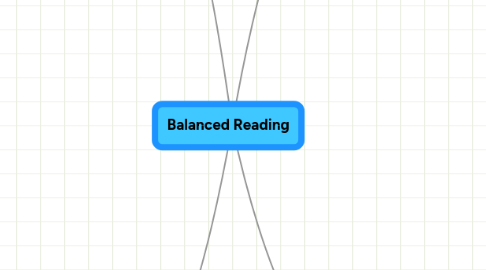
1. Guided Reading
1.1. Small Groups
1.1.1. May change throughout year depending on focus skill
1.1.2. Teacher sits with the students- engages in discussion
1.1.3. Sit at a table together, or in classroom library
1.1.4. "community" feel
1.2. Groups based on instructional range of students
1.3. Teachers apply strategies previously taught in shared reading and read aloud lessons
1.3.1. Strategies may be different for each group, may be based on student need
1.4. Rest of the class engages in independent activities while teacher works with one guided reading group at a time
1.4.1. Literacy-laced activities
1.5. Student copies of text being read
1.5.1. Every student has their own copy of text to use during guided reading
1.6. Literacy Place or other guided reading kits if available
1.7. Guided reading student notebooks
1.7.1. Place for students to keep all of their guided reading work
1.8. Unfamiliar text to students
1.8.1. Carefully selected by teacher
1.9. Texts are just slightly above students independent reading level
1.10. Co-created print created in guided reading groups
1.11. Text often visited more then once
1.12. Antidotal notes made by teacher
2. Independent Reading
2.1. Organized classroom library-- easy for students to find books and put them away correctly
2.2. Wide variety of texts
2.2.1. Relate to student experience
2.2.2. Reflect student culture and background
2.2.3. Variety of genres
2.2.4. Fiction
2.2.5. Non-Fiction
2.2.6. Student interest
2.3. Comfortable area for classroom library
2.3.1. Cozy reading corner
2.3.2. Pillows and mats
2.3.3. Reading Couch
2.3.4. Bean bags or other comfortable seating areas
2.3.5. Welcoming
2.3.6. Encouraging for reluctant readers
2.4. Students apply reading strategies and skills learned in other balanced reading areas during their independent reading time
2.5. D.E.A.R. Drop Everything and Read EVERYDAY
2.6. Students aware of independent reading level
2.6.1. Able to independently pick appropriate reading level books
2.7. Free choice of reading material
2.7.1. Fiction
2.7.2. Non-Fiction
2.7.3. Graphic novels
2.7.4. Magazines
2.7.5. Newspapers
2.7.6. Manuels
2.8. Able to reference classroom literacy reference charts as needed
2.8.1. Have learned how to do this through teacher modelling
2.9. Not always "silent" reading
2.9.1. Share what they are reading with a peer
2.9.2. Discuss in groups or partners
2.9.3. Book talks
2.9.4. Literature Circles
2.10. Minimal teacher support
3. Read Aloud
3.1. Large Group
3.1.1. Learning Carpet
3.1.2. Students engaged in carefully selected text
3.1.3. Book displayed on reading table following read aloud
3.2. Teacher lead instruction
3.2.1. Interactive with teacher
3.2.2. Use of puppets or props to heighten engagement
3.3. Demonstrate reading strategies
3.3.1. Make connections
3.3.1.1. Text to self
3.3.1.2. Text to text
3.3.1.3. Text to world
3.3.2. Predictions
3.3.3. Inferences
3.3.4. Comprehension
3.4. Teacher models behaviour they would like to see students adapt into their reading
3.4.1. Intonation
3.4.2. Use of punctuation
3.4.3. Use of voice
3.5. Above readability level of students
3.6. Background knowledge discussed before read aloud
3.7. Student-relatable picture books
4. Shared Reading
4.1. Large or small group
4.1.1. Can work in smaller group to hit specific teaching areas based on student need
4.2. @ Learning carpet with teacher cart assessable
4.2.1. Big book/ large text viewed easily by all group members
4.2.2. Teacher cart provides an area for book or text to rest on while reading is taking place
4.3. Big books or large print poems
4.3.1. Initially introduced by teacher, than revisited for shared reading lesson
4.4. Teacher and student pointers
4.4.1. Students come up to point at words while classmates read, choral reading
4.5. Interactive learning environment
4.5.1. Students do not necessarily have to raise hands during this lesson, group reading,
4.5.2. Students engaged, excited and anxious to participate
4.5.3. Frequent reference made to word wall and other environmental print
4.5.4. Shared reading text related to learning that is going on in classroom/ cross curricular learning.
4.5.4.1. E.g. science unit
4.5.4.2. Student interest
4.5.4.3. Themes
4.5.5. Word family chart and popcorn word chart used for reference
4.6. Students reading text at same time as teacher and classmates
4.6.1. Once text is familiar, students may come up individually to read in front of peers or use pointer
